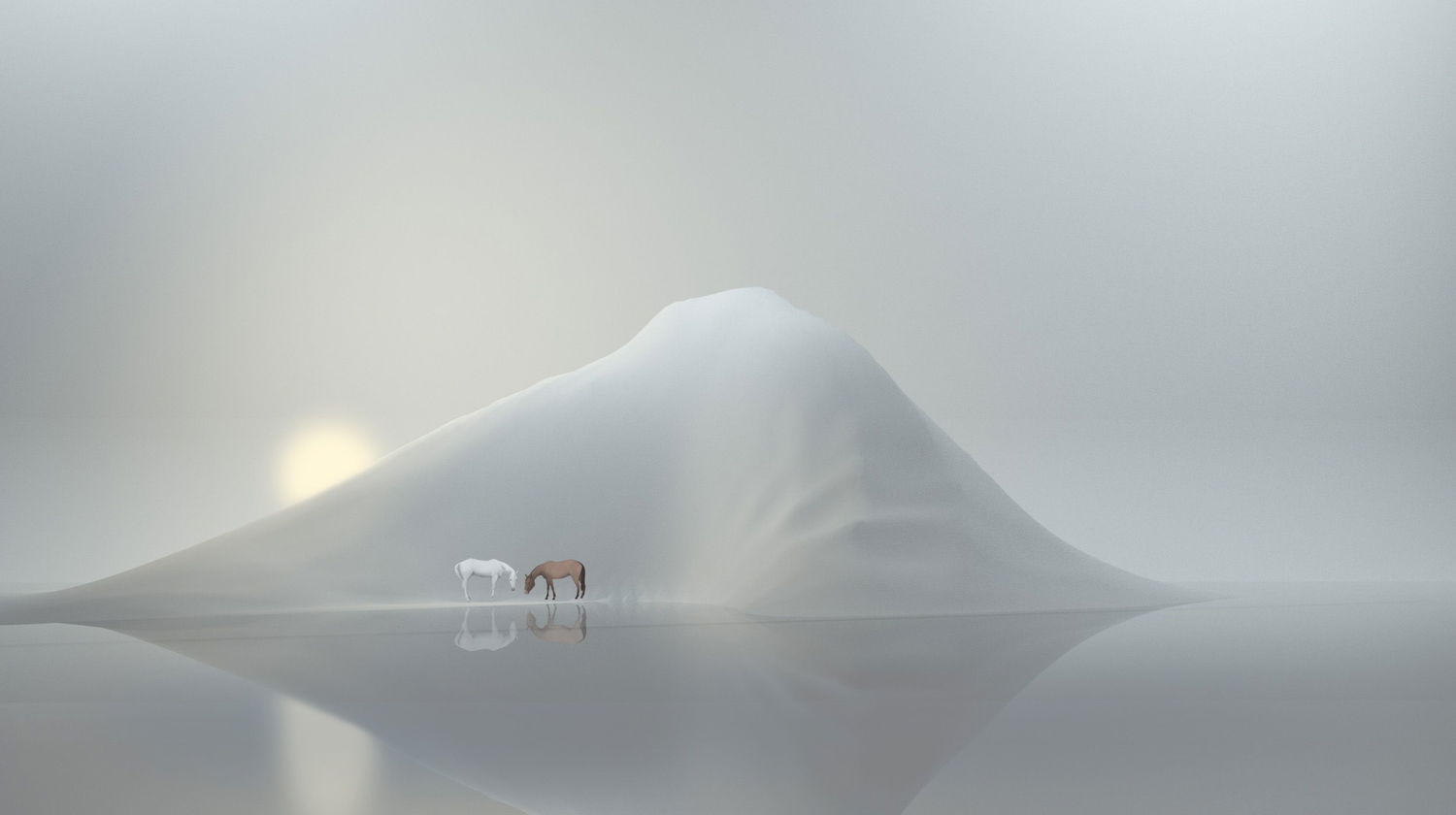Here you can see the preparatory materials for The Grasslands project. They include 3D scans, renders, sketches of the digital habitat, and other preparatory materials that laid the foundation for the project.
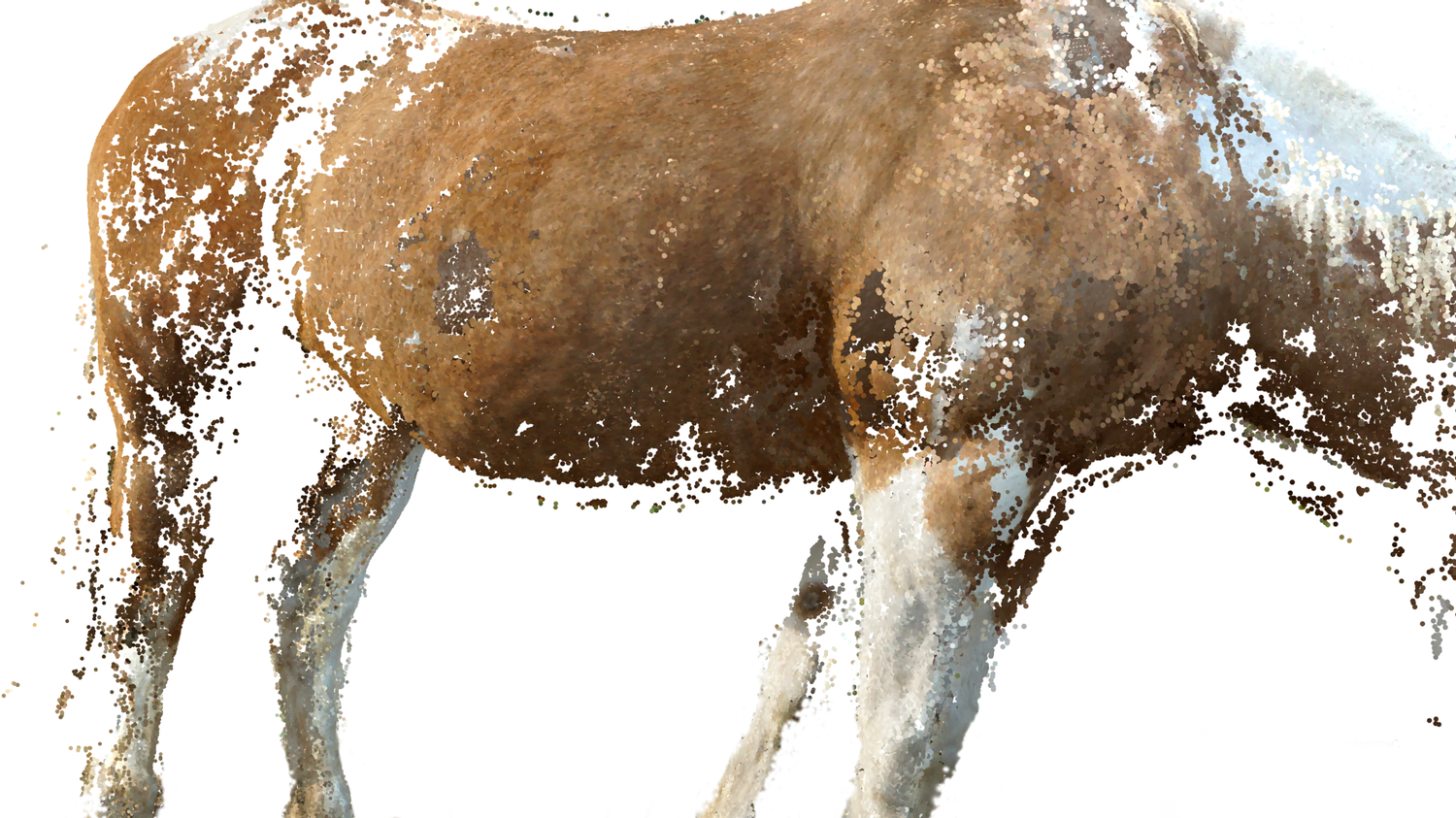
A point cloud from the 3D horse scan at the Tbilisi Nature and History Museum, Georgia
The foundation of this project is based on archival scan materials that I created during street happenings. These archives were enriched with the bodies of both humans, including my own, and animals, both living and dead. I processed all these digital imprints and often combined them, merging human and non-human bodies. They are stored in a unified space, resembling a kind of museum collection.
Chimerical bodies scattered in Unity virtual space:
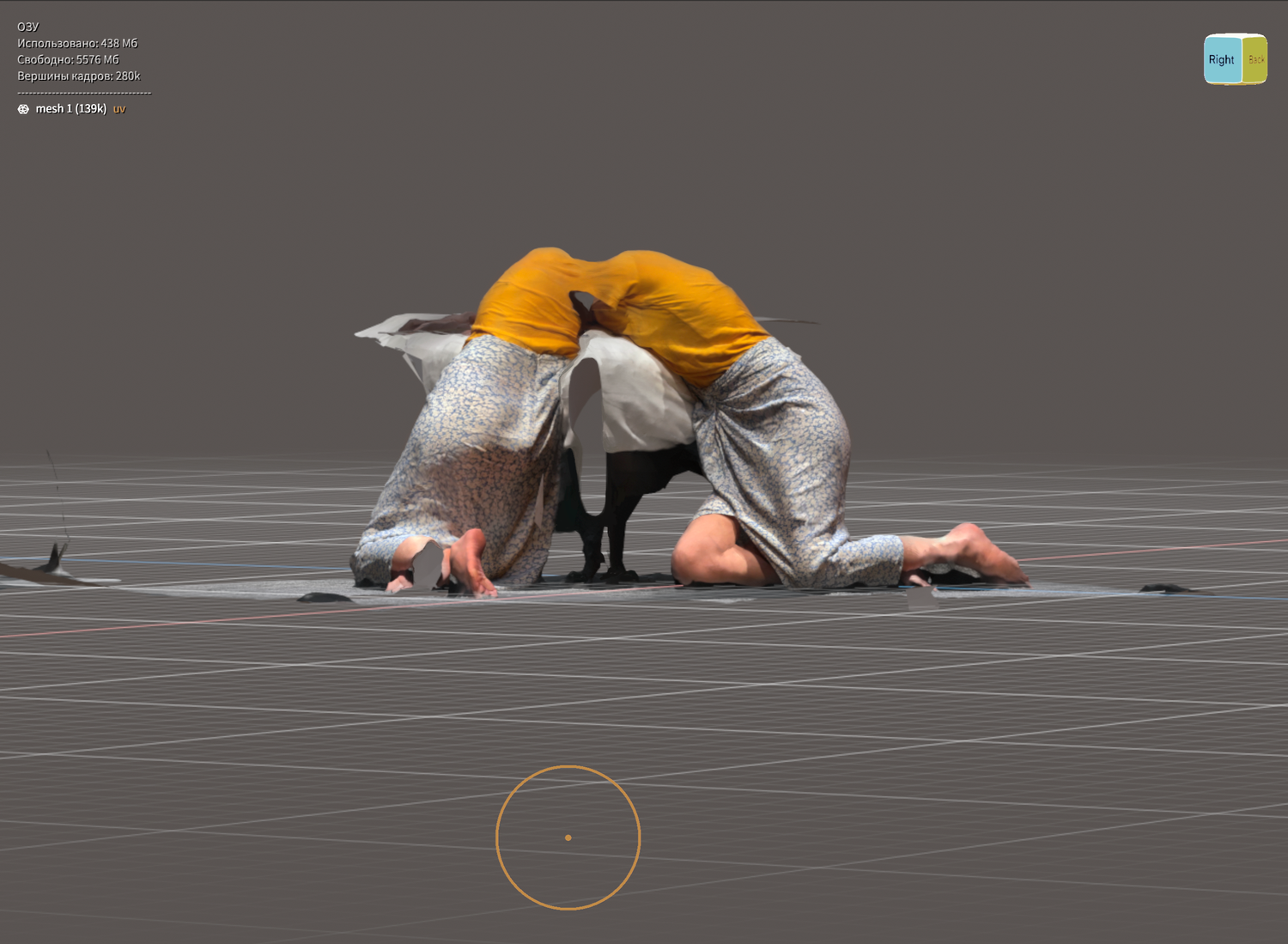
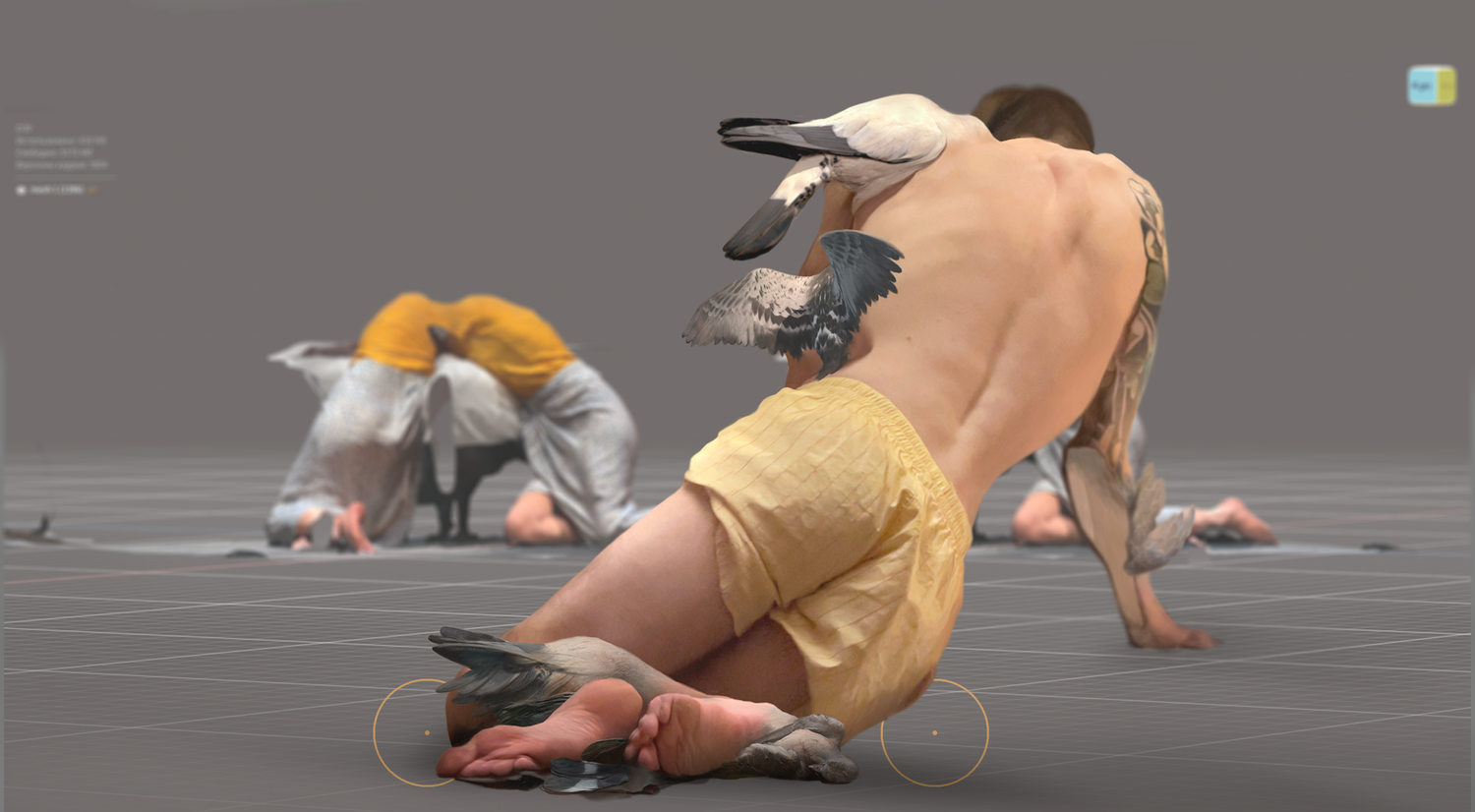
Since last year, I’ve started experimenting with animating these models. To do this, the digital scans first need to be converted into fully functional models suitable for animation.
The first such model was the stuffed horse of Napoleon. His name is Vizier and he is kept in the Museum of the Grand Army in Paris. Until the recent restoration, it was in terrible condition and literally falling apart, and this fact prompted me to save it too but in digital format.
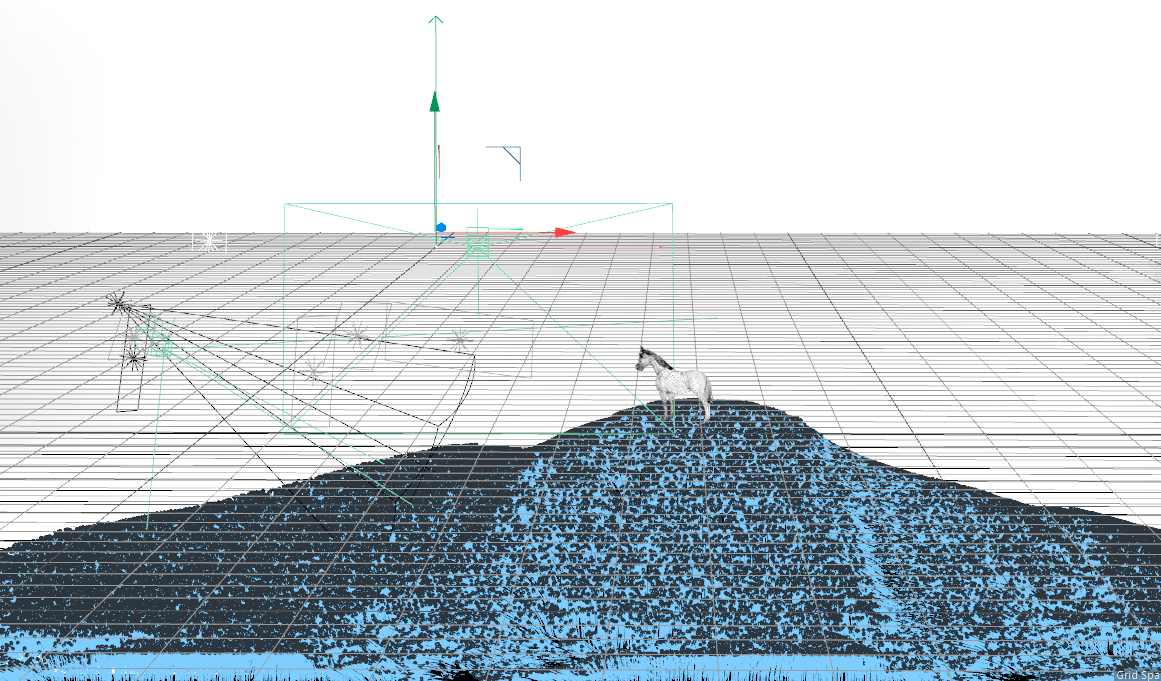
In this picture, Vizier is standing on the top of the hill inside his new environment.
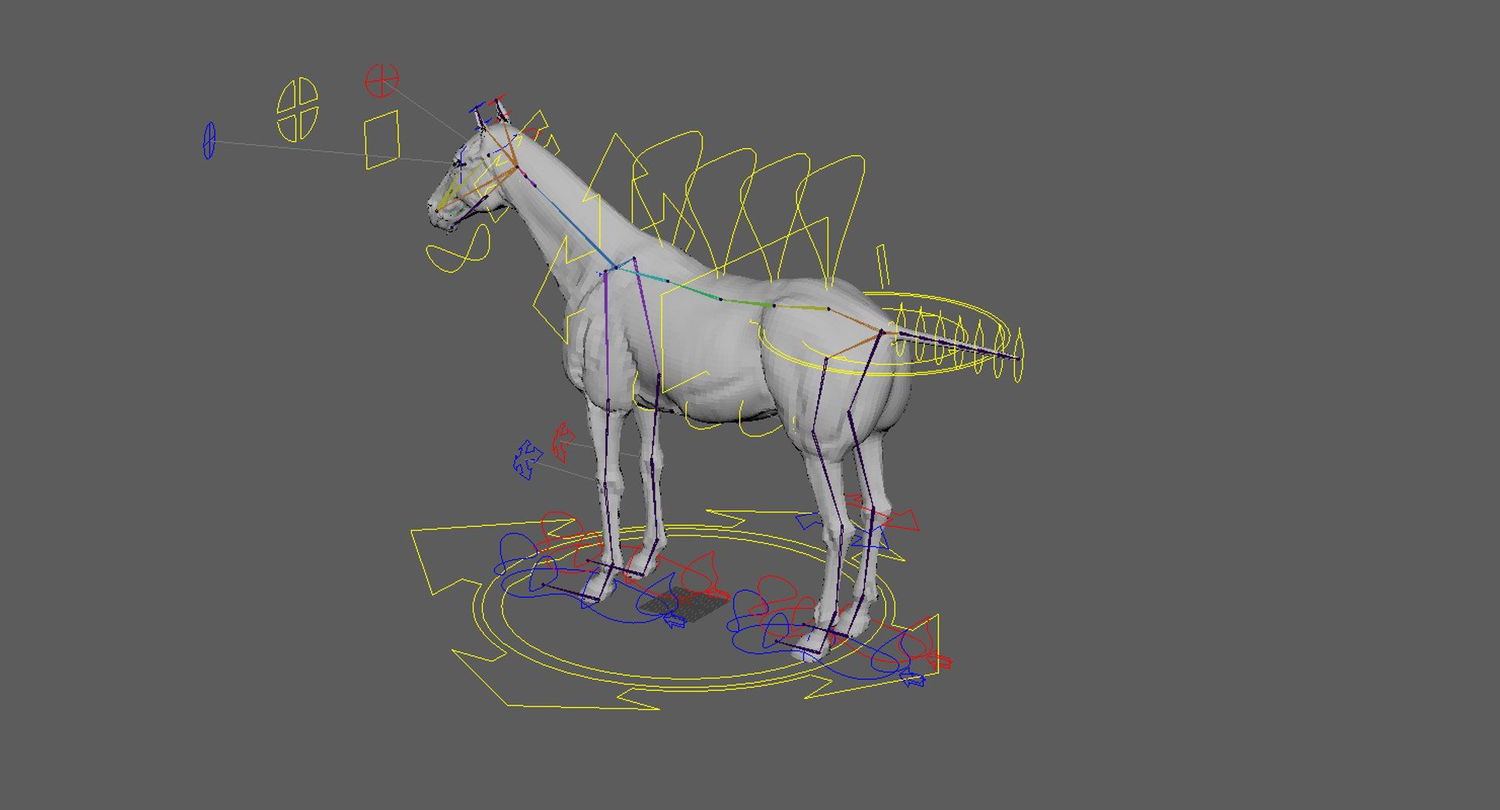
Rigged Vizier model.
Some more model preparations. There is an emperor’s sign on the thigh of the horse.
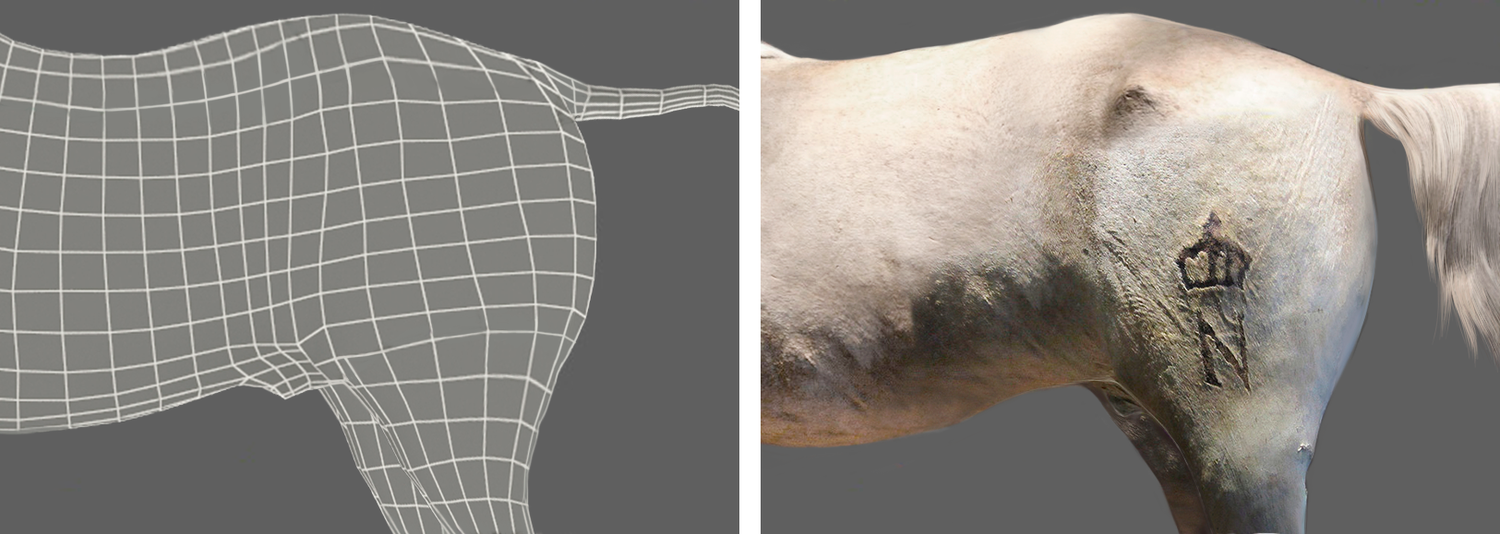
I also thought about what the environment might be like for my newly living creatures. Clean and desolate, almost devoid of context?
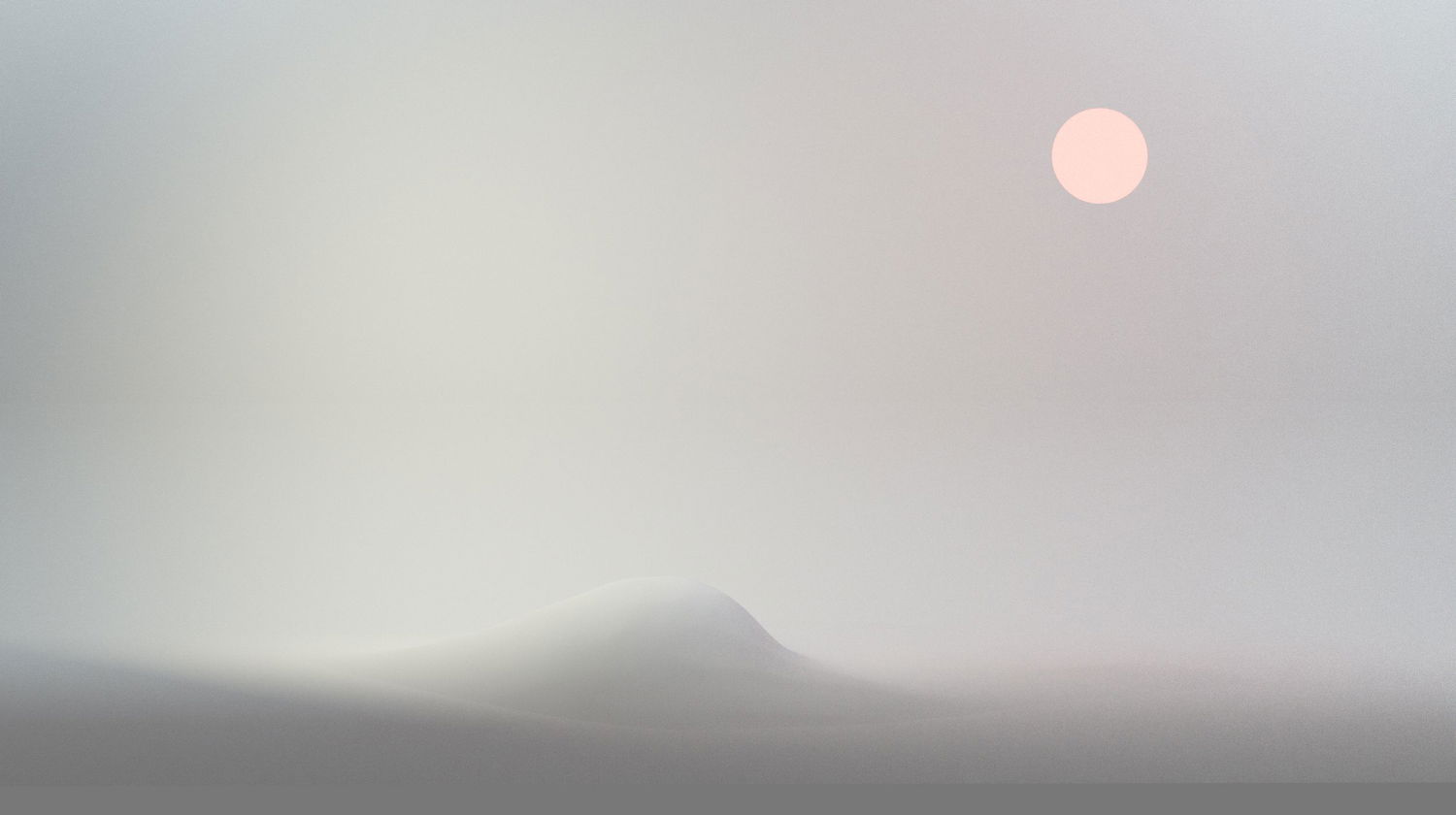

Next, I started looking for the next resident and my choice fell on Vexi, the favorite horse of the King of the Netherlands Willem II. He participated in the Battle of Waterloo with the king and they were both wounded. It was decided to make a stuffed animal out of Vexi. Upon autopsy of the horse, a large bezoar (gastric stone) was found in its stomach, which was also made an exhibit of the museum.
What is the peculiarity of choosing this particular horse? The fact is that Vexi, like his horseman, the king of the Netherlands, participated in battles against Napoleon, including the famous Battle of Waterloo. Therefore, we can assume that these two horses may have known each other.
Vexi is in the Rijksmuseum, the Vizier is in the Grand Army Museum in Paris. Their bodies still preserve the memory of the events they unwittingly participated in.
These animals are agents who have never consented to participate in the story. Their bodies are not just biological remains, they are bodies on which technology, violence, and power have been projected. These horses are mute witnesses and victims of war, whose memory is marginalized or forgotten.
And then I thought, what if the horses of two opponents graze in the same pasture, live in the same space? When they were alive, this could have happened only in the case of some serious political changes, or some other course of history. Thus, putting these two horses together, from the point of view of the history we have, looks like a political provocation.
Using the example of these two animals I have chosen, I explain the creation of such a digital museum-pasture, museum-digital garden, as a place of speculative memory, where history could be told from a non-anthropocentric perspective.
